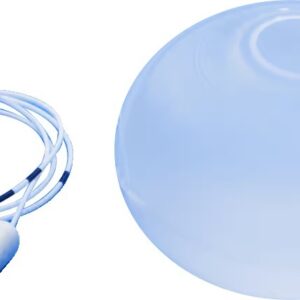The world of Medical Supplies Australia is undergoing a significant transformation. With an ever-changing landscape driven by technological advancements and shifting consumer demands, procuring these essential resources has become more dynamic than ever. Healthcare providers face challenges that require agile solutions—whether adapting to new regulations or managing supply chain disruptions. As we delve into this evolving sector, we’ll explore how stakeholders respond to heightened demand and their strategies to keep pace with change. Join us on this journey as we uncover the innovative approaches shaping the future of medical supply procurement in Australia.
The Growing Need for Efficient Medical Supply Chains
The healthcare landscape is shifting dramatically, and efficient medical supply chains are at the heart of this transformation. As populations expand and demographics change, the demand for essential supplies has skyrocketed.
Hospitals are grappling with increasing patient loads while striving to maintain high-quality care. In turn, they require a steady stream of materials—everything from personal protective equipment to life-saving medications. The pressure is mounting. Technology plays a crucial role in meeting these needs. Digital solutions streamline inventory management and forecasting, ensuring that healthcare providers can access what they need when needed.
Moreover, sustainability has become a priority. Stakeholders seek eco-friendly alternatives without sacrificing quality or availability. This shift enhances efficiency and addresses growing concerns about environmental impact in healthcare settings. Collaboration among suppliers, manufacturers, and health organizations is vital for building resilient supply chains capable of weathering uncertainties ahead.
Impact of Global Events on Local Procurement Strategies
Global events profoundly impact local procurement strategies, particularly in the medical supplies sector. The COVID-19 pandemic exposed vulnerabilities in supply chains worldwide. Sudden spikes in demand led to shortages, forcing healthcare providers and suppliers to rethink their sourcing methods.
Local procurement must be more agile than ever as new challenges emerge—like geopolitical tensions or climate-related disruptions. Businesses are now prioritizing flexibility, enabling them to adapt quickly to unforeseen circumstances while ensuring that essential medical supplies remain available.
Healthcare organizations are also focusing on building resilient networks with local suppliers. This strategy mitigates risks associated with global dependencies, fosters community relationships, and supports national economies during turbulent times. By investing in regional partnerships, organizations can ensure a steady flow of crucial resources even when international channels face interruptions.
Shifting Toward Domestic Manufacturing and Sourcing
Australia is witnessing a significant shift toward domestic manufacturing and sourcing of medical supplies. This movement has gained momentum as healthcare providers seek to secure reliable access to essential products. By investing in local production, Australia can reduce its dependency on international suppliers and ensure that critical items are readily available.
The benefits of domestic manufacturing extend beyond supply security. Local production often leads to faster turnaround times, allowing hospitals and clinics to respond swiftly to changing needs. Moreover, by prioritizing Australian-made medical supplies, the economy can benefit from job creation and support for local businesses.
Additionally, this focus on homegrown solutions enhances quality control measures. With closer oversight of the manufacturing process, healthcare facilities can maintain stringent standards that align with regulatory requirements. As trust in locally produced goods increases, so does patient confidence in receiving top-notch care supported by reliable supplies.
Embracing Digital Platforms for Streamlined Ordering
The shift to digital platforms is transforming how medical supplies are ordered in Australia. Traditional methods often involved lengthy processes, from phone calls to paperwork. Now, hospitals and clinics can access online marketplaces offering a wide range of products.
These digital solutions significantly simplify the ordering process. Users can quickly compare prices, check availability, and place orders with just a few clicks. This efficiency saves time and reduces the risk of errors associated with manual ordering.
Moreover, many platforms provide real-time updates on order statuses and delivery schedules. Healthcare professionals can now track their shipments seamlessly, ensuring they have the right supplies when needed most. Embracing technology in procurement empowers healthcare providers to respond rapidly to changing demands while maintaining high standards of care.
Inventory Management and Real-Time Tracking Solutions
Effective inventory management is crucial for maintaining an efficient medical supply chain. With the rise in demand for medical supplies in Australia, hospitals and clinics increasingly adopt real-time tracking solutions to keep their inventories up-to-date. This technology allows organizations to monitor stock levels continuously, ensuring they have what they need when needed.
Real-time tracking enhances transparency and reduces the risk of overstocking or running out of essential supplies. By leveraging data analytics, healthcare providers can make informed decisions about ordering patterns and anticipate future needs based on trends. This proactive approach leads to better resource allocation.
Moreover, integrating these tracking systems with existing procurement processes creates a seamless workflow that minimizes delays. As medical facilities strive for operational excellence, embracing innovative inventory solutions proves vital in adapting to the changing landscape of healthcare demands across Australia.
Ensuring Quality and Compliance with Regulatory Standards
Quality assurance is paramount in the procurement of medical supplies in Australia. Regulatory standards set by organizations such as the Therapeutic Goods Administration (TGA) ensure that all products meet safety and efficacy requirements. Adhering to these regulations helps protect both healthcare providers and patients.
Suppliers must remain vigilant, constantly updating their processes to align with changing guidelines. Regular audits, documentation reviews, and compliance training are essential for high standards. This proactive approach reduces risks associated with subpar products entering the market.
Additionally, transparency throughout the supply chain enhances trust among stakeholders. Suppliers can assure hospitals and clinics that they are receiving reliable products by employing rigorous testing protocols and quality checks before distribution. Quality control measures safeguard patient health and support ongoing efforts to improve healthcare outcomes across Australia.
Building Strong Relationships with Trusted Suppliers
Building strong relationships with trusted suppliers is crucial for effective procurement of medical supplies in Australia. These partnerships foster open communication and collaboration, allowing organizations to respond quickly to changing demands and challenges. When hospitals and clinics work closely with their suppliers, they can gain insights into product availability and emerging trends.
Establishing trust ensures that both parties prioritize quality over quantity. Reliable suppliers are more likely to adhere to regulatory standards and provide consistent access to vital products. This enhances patient care and mitigates the risks associated with sourcing from less reputable sources.
Regular check-ins, feedback sessions, and joint planning initiatives strengthen these connections. By investing time in nurturing supplier relationships, healthcare providers can create a resilient supply chain capable of meeting the demands of an evolving landscape while ensuring that quality remains paramount.
Custom Procurement Plans for Hospitals and Clinics
Hospitals and clinics in Australia are increasingly recognizing the importance of tailored procurement plans. Each facility has unique needs based on size, location, and patient demographics. Customizing procurement strategies ensures that medical supplies align closely with these specific requirements.
Healthcare providers can stock essential items without excess inventory by analyzing usage patterns and forecasting demand. This approach reduces waste and increases efficiency within the supply chain. Hospitals can better manage their resources with a customized plan while ensuring timely access to critical medical supplies.
Moreover, personalized procurement fosters stronger partnerships between suppliers and healthcare institutions. When suppliers understand the individual challenges each hospital or clinic faces, they can offer solutions that truly meet those needs—leading to improved patient care and operational success across the board.
Integrating Sustainability into Medical PPE Supplies Procurement
Sustainability is becoming a priority in the procurement of Medical PPE Supplies. As healthcare facilities address their environmental impact, they increasingly seek eco-friendly personal protective equipment (PPE). The shift includes sourcing materials that minimize waste and utilize renewable resources.
Innovative manufacturers are stepping up by developing biodegradable masks and reusable gowns. These options not only reduce landfill contributions but also offer cost-effective solutions for hospitals faced with tight budgets. A focus on sustainable practices encourages suppliers to rethink traditional production methods.
Furthermore, integrating sustainability into procurement strategies can enhance a facility’s reputation. Patients appreciate healthcare providers who commit to environmentally responsible practices. This growing awareness fosters stronger relationships with communities while promoting a healthier planet for future generations.
Challenges and Opportunities in Meeting Sudden Demand Surges
Australia’s healthcare sector often faces a sudden surge in demand for medical supplies, especially during unforeseen events like pandemics. These spikes can strain existing supply chains and lead to shortages of essential items. Hospitals and clinics must navigate these challenges while ensuring patient care remains uninterrupted.
However, such situations also present opportunities for innovation. The urgency to meet increased demand encourages suppliers to enhance their logistics strategies and adopt agile procurement practices. This shift addresses immediate needs and prepares the industry for future fluctuations.
Moreover, collaboration among stakeholders becomes crucial during these times. By fostering partnerships with local manufacturers and utilizing technology, organizations can create more resilient supply chains that adapt swiftly to changing circumstances while maintaining quality standards across the board.
Conclusion
The landscape of Medical Supplies Australia is evolving rapidly. As healthcare demands shift, procurement strategies must also adapt to ensure that hospitals and clinics can respond effectively to patient needs. The industry can navigate challenges more efficiently by embracing a multi-faceted approach—focusing on local sourcing, digital innovation, and strong supplier relationships. This agility enhances the supply chain and bolsters the resilience of healthcare services nationwide. As we move forward, prioritizing quality and sustainability will remain essential. The collaboration between suppliers and health institutions holds immense potential for improving outcomes while ensuring compliance with regulatory standards. With continued focus on these areas, Australian healthcare can better prepare for future uncertainties.
FAQs
As the landscape of medical supply procurement continues to evolve, questions often arise. Here are five frequently asked questions that shed light on this dynamic field.
What factors influence the demand for Medical PPE Supplies?
Various elements, including population growth, aging demographics, and external global events like pandemics, drive the demand of Medical PPE Supplies. Increased healthcare awareness also plays a significant role.
How has COVID-19 impacted local procurement strategies?
COVID-19 highlighted vulnerabilities in supply chains. Many organizations shifted focus from international suppliers to local options to reduce dependency and ensure timely access to critical supplies.
Are Australian hospitals moving towards domestic manufacturing for medical supplies?
There is a growing trend toward domestic manufacturing as health authorities aim to enhance self-sufficiency. This approach supports local economies and mitigates risks associated with global disruptions.
What technologies are being adopted for inventory management in healthcare?
Healthcare facilities are increasingly using real-time tracking solutions and automated ordering systems. These digital platforms facilitate better inventory management and improve responsiveness during peak demand.
How can sustainability be integrated into procurement practices?
Sustainable sourcing involves selecting environmentally friendly materials while ensuring compliance with regulatory standards. Organizations are now prioritizing suppliers who demonstrate sustainable practices throughout their operations.
These FAQs encapsulate some key considerations surrounding the evolving procurement landscape for medical supplies in Australia today.









